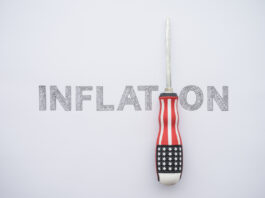- Real GDP rose 5.6% (annualized) in the first quarter of 2021, below consensus expectations for 6.8%. This left GDP around 2% below where it was in the fourth quarter of 2019. In nominal terms, GDP increased by 18.4% annualized in the first quarter.
- The improvement in activity was broad-based across expenditure components, but exports and residential investment stand above the rest. Exports were up 6%, led by aircraft, other transportation, and crude oil and crude bitumen exports. Meanwhile residential investment rose a whopping 43.3%. Growth in housing investment was broad-based, with residential construction in Ontario and Quebec especially strong in the quarter.
- After weakening in the fourth quarter of 2020, consumption growth picked up in the first quarter, rising 2.7%. Durable goods purchases (+5.9%) led the way as spending on vehicles, information processing equipment, and major tools and equipment increased.
- Non-residential business investment was the only component to decline, dropping 2.7% in the first quarter. This was due to a steep drop in investment in aircraft. Investment in non-residential structures improved by 2.5% in the first quarter.
- On the income side, household disposable income rose 9.5% as government transfers to households increased on the back of expanded employment insurance and other benefits. As disposable income outgrew consumption, the savings rate rose from 11.9% to 13.1%.
- Along with quarterly GDP, Statistics Canada released industry-level GDP data for March, which showed a 1.1% m/m increase for the month. Looking ahead, the agency’s flash estimate predicts a decline of 0.8% in April.
Key Implications
- The Canadian economy posted another quarter of solid growth to begin 2021 as it continued down the road to recovery. Last quarter’s performance came even as the second wave resulted in tighter restrictions early in the quarter, reflecting the economy’s improved resilience to the pandemic.
- The third wave is posing near-term challenges for the economic recovery. More stringent measures enacted in April including shutdowns of workplaces with reported outbreaks by some jurisdictions, drove the estimated decline of 0.8% in GDP for the month. With many restrictions still in place through May, the economy probably did not do that much better in the second month of the second quarter.
- The good news is that the worst appears to be behind us. Vaccinations are progressing at an impressive pace, daily caseloads are declining, and provinces are beginning to lift restrictions. These conditions will set the stage for a strong rebound in demand. At the same time, we should see a rotation in economic activity away from housing and durable goods consumption to the services sector, especially high-contact businesses still reeling from the pandemic. This could fuel extraordinary growth this summer.
